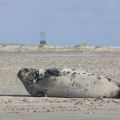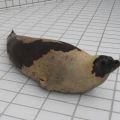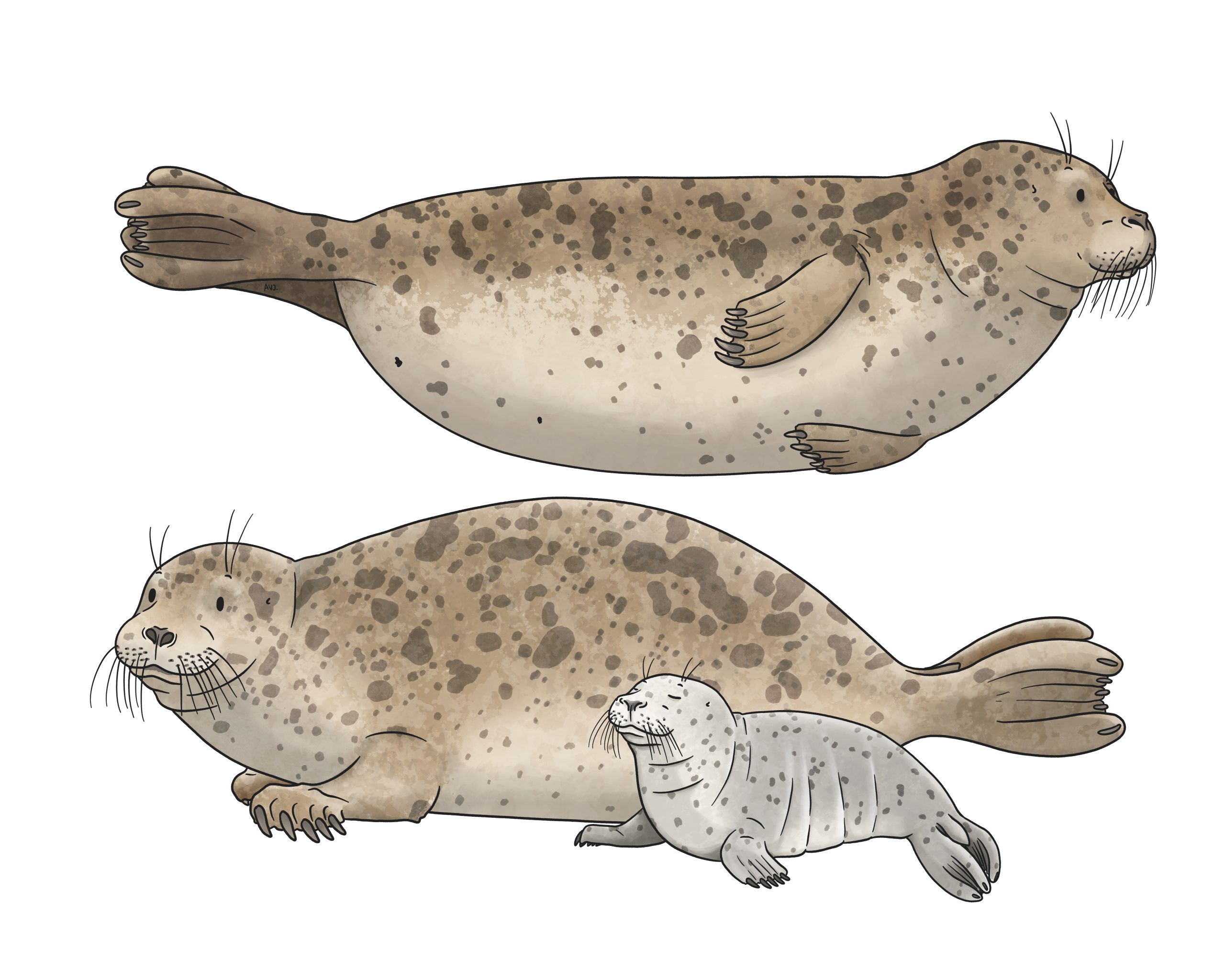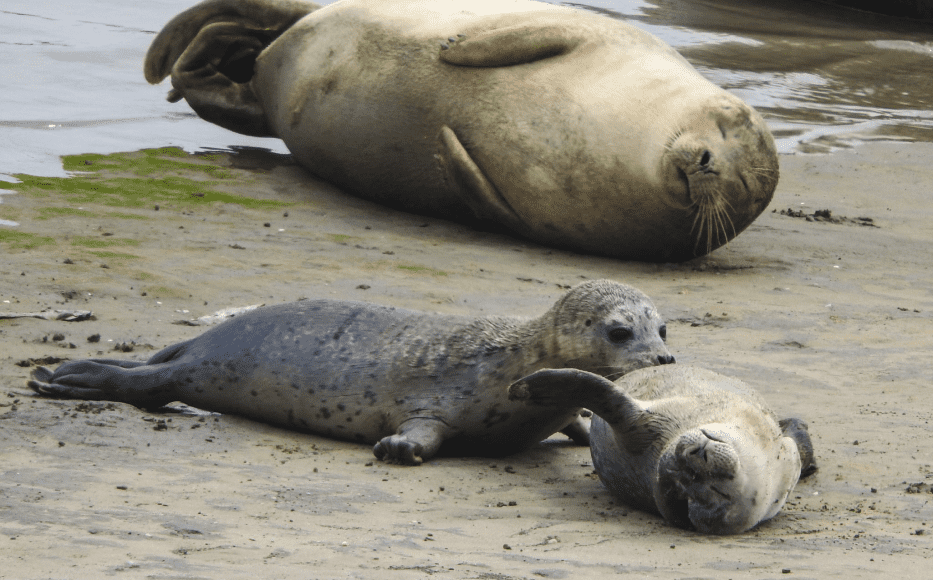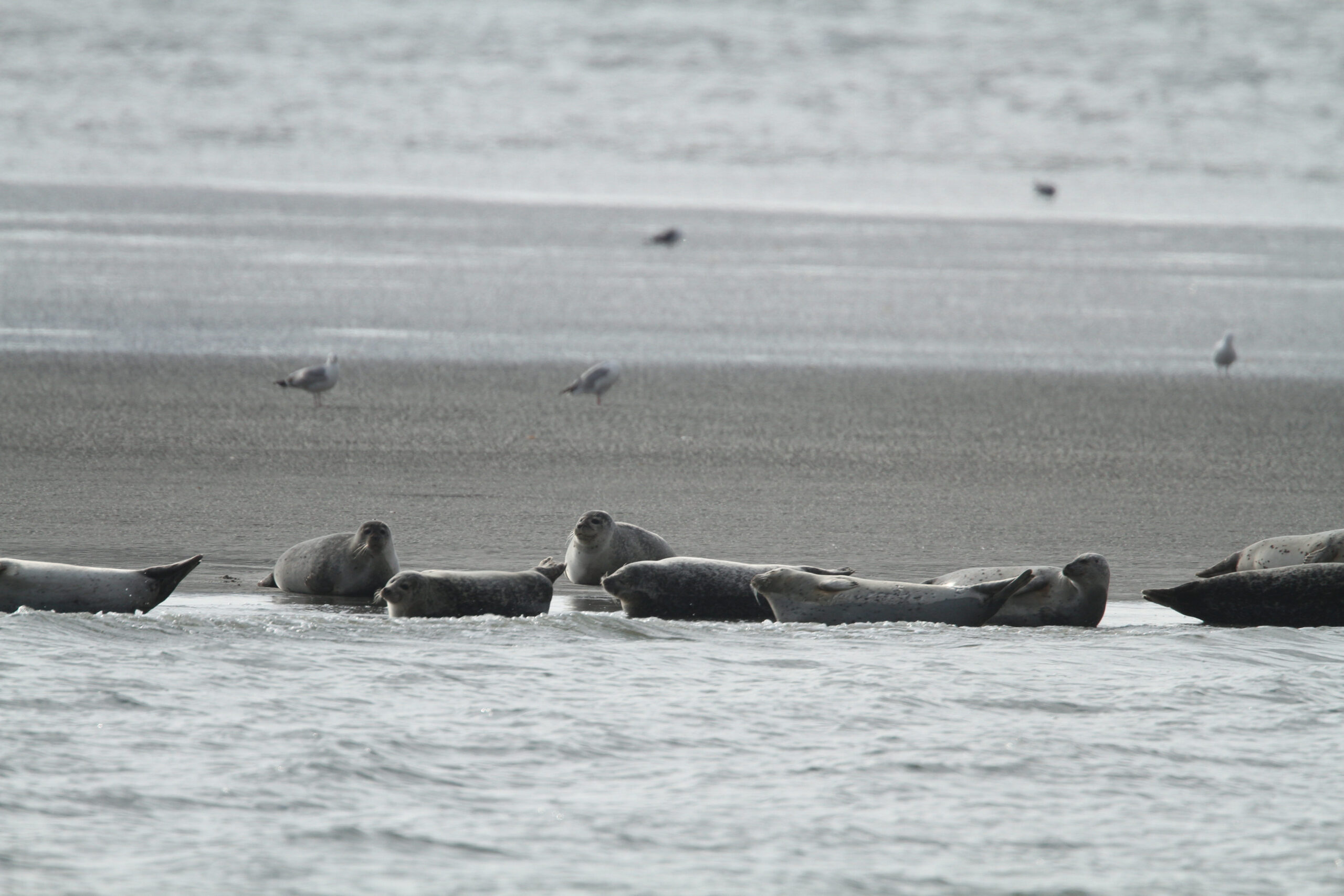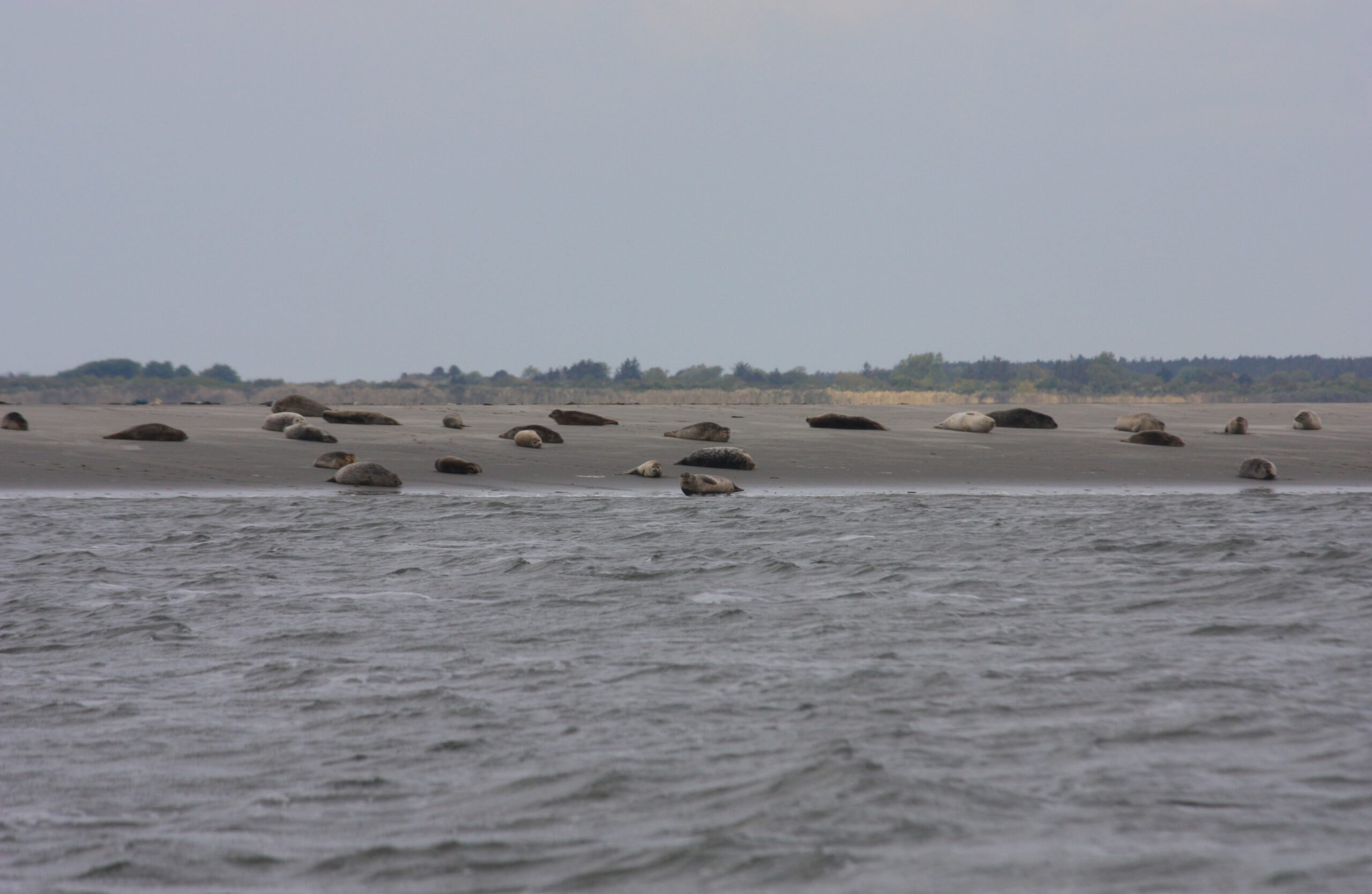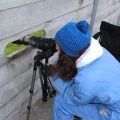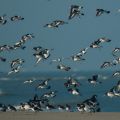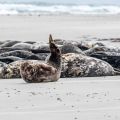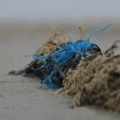Common seal
Scientific name: Phoca vitulina
Family: Phocidae
Size: male: 1.60 meter; female: 1.50 meter
Weight: male: 87 kilo; female: 65 kilo
Habitat: entire Northern hemisphere
Endangered status: not endangered
See also
"The other name of this species reveals where it is common: harbour seal"
External characteristics of the common seal
The common seal has a fairly round head and a blunt snout. The nostrils are a v-shape. Their face looks a bit like a cat. Their fur is very short, smooth and has a light brown or grey colour with dark spots on it. The spot pattern is unique for each seal. You can think of it as a human fingerprint.
The common seal is relatively small compared to other seal species. In the Netherlands, the males can reach an average length of 160 cm and weigh 87 kg. The females are on average 148 cm long and weigh 65 kg. The average size of the common seal varies by region.
In Japan, for example, there is a common seal population that is getting a lot bigger. Namely 186 cm long and between 87 and 170 kg for the males and 169 cm long and between 65 and 142 kg for the females.
In the wild, common seals live about 20-30 years. In captivity, they can grow even older. For example, common seal “Piet” spent his entire life in Ecomare on Texel, until he died in 2009 at the age of 41.
Gender differences
There are few differences between males and females. This is because their coats are the same colour and they are almost the same size.
Did you know...
Harbour seals regularly swim up in rivers and can stay there for a long time before returning to the sea. In 2022, for example, a common seal may have lived for a month in a spur of the Lek in Gelderland.
Distribution and status
De Engelse naam van de gewone zeehond is “common seal” of “harbour seal” (havenzeehond). Dat zegt al veel over waar deze soort voorkomt. De gewone zeehond leeft vrij dicht bij de kust en is daarom ook wel eens in havens te zien.
The habitat of the common seal is spread throughout the Northern hemisphere, but they always stay close to the coast.
The common seal is not considered to be endangered. According to IUCN, the international conservation organisation, the population worldwide consists of about 600,000 common seals. That number is large enough and ensures that the world population is stable. This means that no intervention is necessary for the species to continue to exist.
The common seal in the Netherlands
Every year, about 8,000 common seals are counted in the Netherlands and scientists estimate that about 10,000 common seals use Dutch waters.
Did you know...
That there are two types of seals living in the Netherlands? The common seal is one of them. Do you know the other? You can find the answer here.
The largest population of seals live in the Wadden area. There they use the sand banks to rest, reproduce and give birth to pups. They hunt and eat in the North Sea. Common seals also live in Zeeland, but a lot less than in the Wadden area. There, they mainly live on sandbanks in the Oosterschelde and along the North Sea coast.
In recent years, the number of seals that are counted annually in the Netherlands and in the entire Wadden Sea has been more or less the same. In the Netherlands, it was quite recently that the population of common seals was in danger. Until 1962 there was still a lot of hunting of the common seal. There have also been outbreaks of the seal virus (Phocine Distemper Virus) in 1988 and 2002 in which half the population died. In both cases, the population quickly recovered. Also with the help of shelters along the entire Wadden Sea coast.
Diet and foraging
The common seal is an opportunistic hunter. It means that this species is flexible when it comes to where and what kind of prey it hunts. This allows them to look for food close to their resting place. But sometimes seals swim miles away from their resting spot, either along the coastline or further out to sea to hunt. They can dive to depths of more than 500 meters for food.
In addition, seals do not hunt one particular type of fish, squid or shrimp. Their diet varies greatly depending on the region and season. In the Netherlands they mainly hunt small to medium-sized fish species, such as cod, hake, mackerel, herring, sardines, allis shad, capelin, sculpin, various sandeels, flatfish and salmon species. In addition to those fish species, the common seal also often hunts squid and crustaceans such as shrimps and crabs.
Did you know...
That the common can hunt effectively in poor visual conditions, for example in dark murky waters?
The common seal, like many other seal species, uses its whiskers to find prey. Their specially shaped whiskers are super sensitive and can detect the smallest vibrations. Due to their irregularity and wavy shape (unlike the smooth whiskers you've probably seen on a cat or dog), the whiskers are so streamlined that they glide smoothly through the water.
Thanks to research we know that the common seal can still feel the vibrations in the water of a fish that swam away a while before. So they use their whiskers in a similar way that whales and dolphins use echolocation: by picking up vibrations of sound waves in the water. With seals it is all about movements in the water.
Common seal behavior
Common seals are solitary animals. That means that they prefer to be alone. On land, seals may lie in groups, because then it is more likely that one of the seals will see predators approaching. They also want to remain close to the water's edge, so that they can quickly flee when disturbed. They often do this at the slightest threat.
Have you ever seen a seal 'wave'? They are not doing this to say hello. On the contrary: it is a threat. With this waving, the seal means that if the threat approaches, it risks being scratched with the long nails on the front flipper.
Towards the end of summer/beginning of autumn, common seals are more often found on land. They lie together in larger groups. Seals moult two to three months after the mating season: then they shed their old fur for a new coat.
Reproduction in common seals
Mating behaviour
Common seals mate in the water, around the time the pups are weaned (late summer). Males will compete with each other for females. They do this by making noise, diving and fighting with each other. Males often mate with multiple females.
Diapause and pregnancy
As with all seal species, the fertilization is followed with an embryonic diapause. A diapause means that there is a time between fertilization and the actual pregnancy. In the common seal, the diapause lasts up to 2.5 months. After this, the fertilized egg implants in the uterus. The total pregnancy (including diapause) lasts 10.5 months.
In most seal species, more than 85% of females become pregnant each year. Once the common seals reach sexual maturity, they remain reproductive throughout their entire lives.
Birth and nursing period
Common seal pups are born on land in the summer. These pups can go into the water almost immediately after birth, which is often necessary when the tide comes in. In the water, pups often hang onto their mother’s back to hitch a ride. Common seal birthing season in the Netherlands usually lasts from June to July.
Did you know...
That pups from the common seals grow 17 kilos in the first 4 weeks of their life?
The pup are nursed by their mother for 4 weeks with milk containing approximately 40% fat. The puppies then gain weight quickly. They grow from 8 kg at birth to 25 kg in 4 weeks. After this they are completely abandoned and they have to learn to hunt on their own. Fortunately the instinct of young seals to learn this on their own is very strong.
